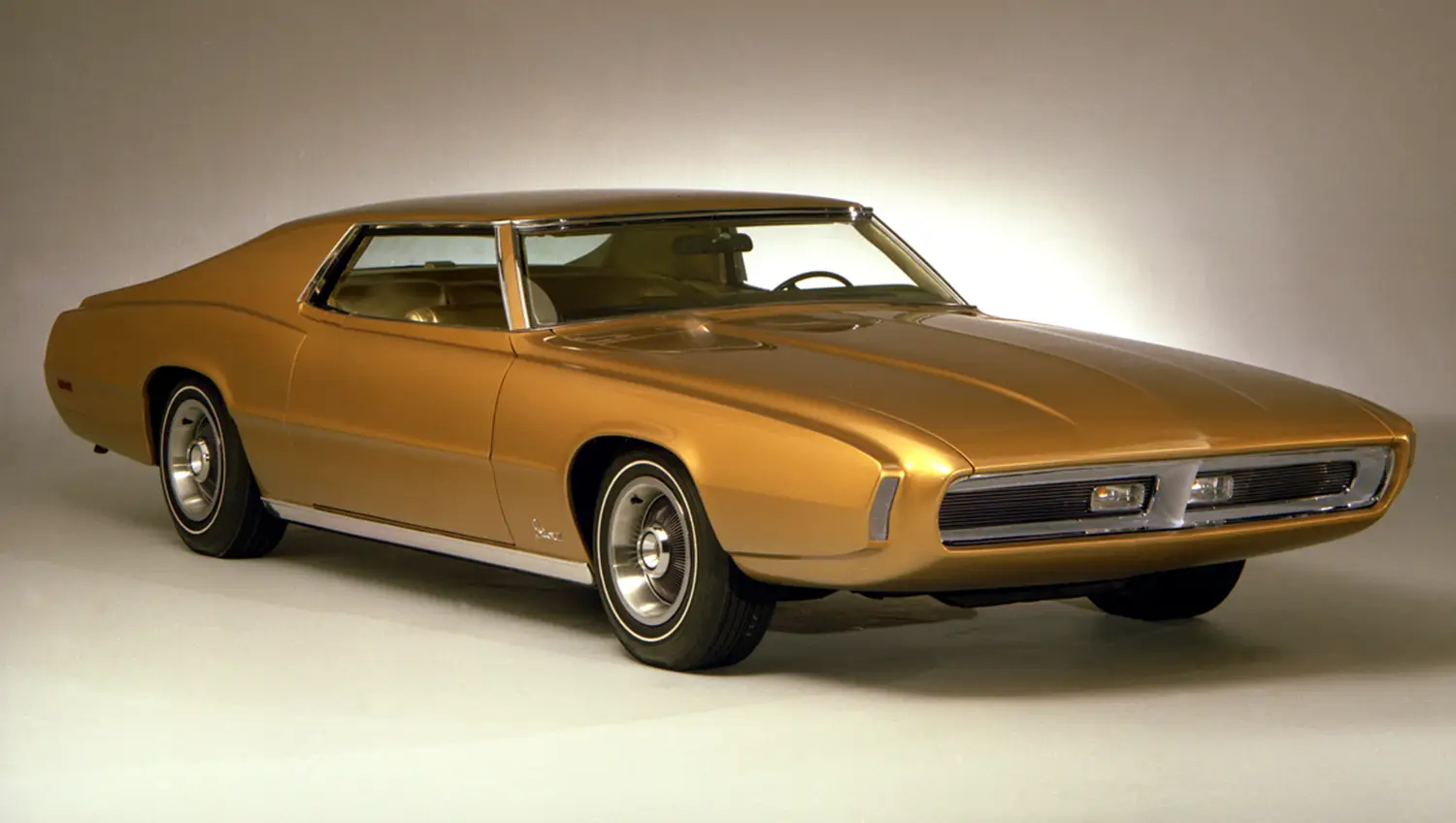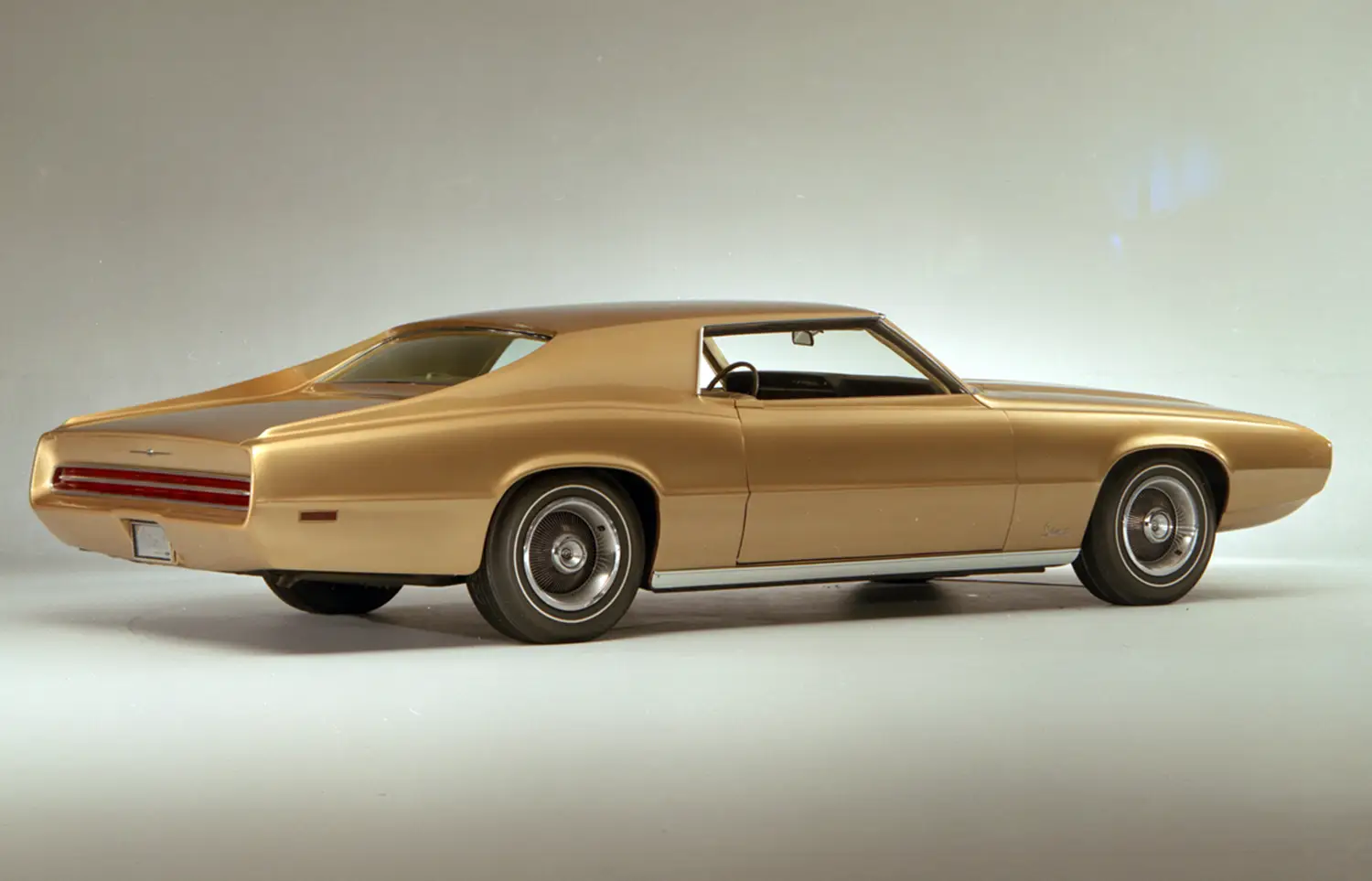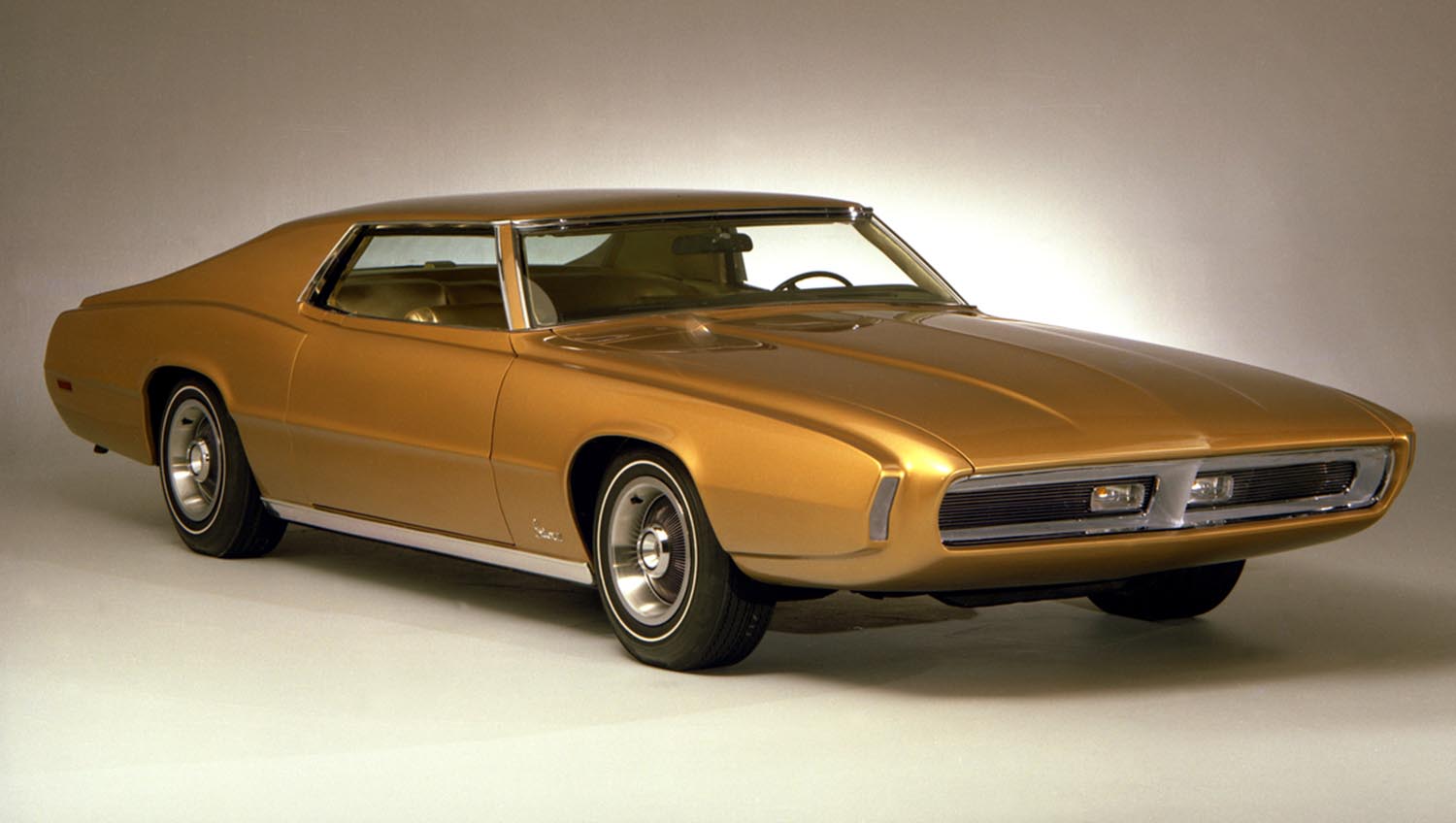
Concept cars are vital showcases of a manufacturer’s vision, often testing radical ideas and gauging public reaction. The 1968 Ford Thunderbird Saturn II concept is a perfect example of this process. Created at the Ford Design Center in Dearborn, Michigan, the Saturn II took the existing fifth-generation Thunderbird and pushed its design and technology far into the future. It aimed to redefine the personal luxury car segment. This unique show car, often believed to be an evolution of the earlier 1968 Saturn I, toured the auto show circuit in 1969.
Evolving a Personal Luxury Car Legacy
The Ford Thunderbird was already an established icon by 1968, known for comfort and style over pure sportiness. However, the market was changing quickly. The Thunderbird needed a new direction to stand out from emerging competitors. Consequently, the Saturn II was engineered to be an aspirational vehicle. It provided a glimpse into how luxury motoring might look in the 1970s and beyond.
The Futuristic Exterior Design
The Saturn II began life as a standard 1969 Thunderbird production coupe. It received extensive body modifications, transforming its silhouette. Ford lowered the roof panel by two inches to achieve a sleeker, lower profile. Furthermore, the hood was lengthened by four inches. This emphasized the car’s long, prestigious appearance. The result was a dramatic, aggressive, and highly stylized coupe.
A Striking Gold Metal-Flake Finish
The car’s visual impact was amplified by its color scheme. It was painted in a distinctive pearlescent gold metal-flake paint. This bright finish helped the **1968 Ford Thunderbird Saturn II** stand out under the harsh lights of auto shows. Inside, the luxury theme continued with metallic gold leather upholstery. The whole design communicated an unapologetic sense of future opulence.
Inside Ford’s Vision of Tomorrow
If the exterior design was impressive, the interior was truly revolutionary for its time. Concept cars are best known for integrating non-existent technology. The Saturn II’s cockpit was packed with advanced electronic equipment. This technology was designed to make future travel easier and more engaging. The high-back bucket seats anticipated safety and comfort trends.
Advanced Electronic Communication Systems
Ford’s vision of connectivity featured two-way voice communications equipment. This was a concept similar to a modern mobile phone or CB radio. A unique feature was a reel-to-reel tape recorder. This was likely intended for recording notes or messages while driving. This equipment highlighted a new focus on business and communication while on the road.
Predecessor to Modern Navigation
The most forward-thinking feature was the computerized travel instrumentation. This included a sophisticated “computerized trip monitor” and an early form of a radar screen. While mostly non-functional mock-ups, they represented a conceptual navigation system. These features foreshadowed the GPS and telematics systems common in cars today. Therefore, the Saturn II was a true visionary car.
Performance and Technical Highlights
The goal of the Saturn II was to showcase luxury, not just raw speed. However, its underlying platform offered substantial power. It was built on the robust fifth-generation Thunderbird chassis. This platform supported the large-displacement Ford V-8 engines of the late sixties.
The original 1969 production Thunderbird came with a choice of potent engines. These options included the powerful 429 cubic inch (7.0 L) V-8 engine. This engine was rated at 360 horsepower. It provided effortless cruising and authoritative acceleration. Though the concept focused on luxury, it retained the Thunderbird’s inherent muscle. The suspension was tuned for a comfortable ride. Its large scale and hefty engine confirm its status as a grand personal tourer.
Legacy of the Thunderbird Concept
The **1968 Ford Thunderbird Saturn II** successfully served its purpose as an influential auto icon. It was a spectacular piece of automotive theater. Many styling elements seen on the concept found their way into production models. The car offered a popular fastback roofline. This sloping design appeared in a toned-down form on the 1970 and 1971 Thunderbird coupes. Its bold exploration of technology cemented its place in design history. This concept car proves that the Thunderbird model was never afraid to look forward.
Disclaimer: Content on this site is for informational purposes only. Vehicle specs, pricing, and availability may change. Always verify details with official sources before making decisions. Opinions are those of the authors.
Source: Ford Heritage Vault

